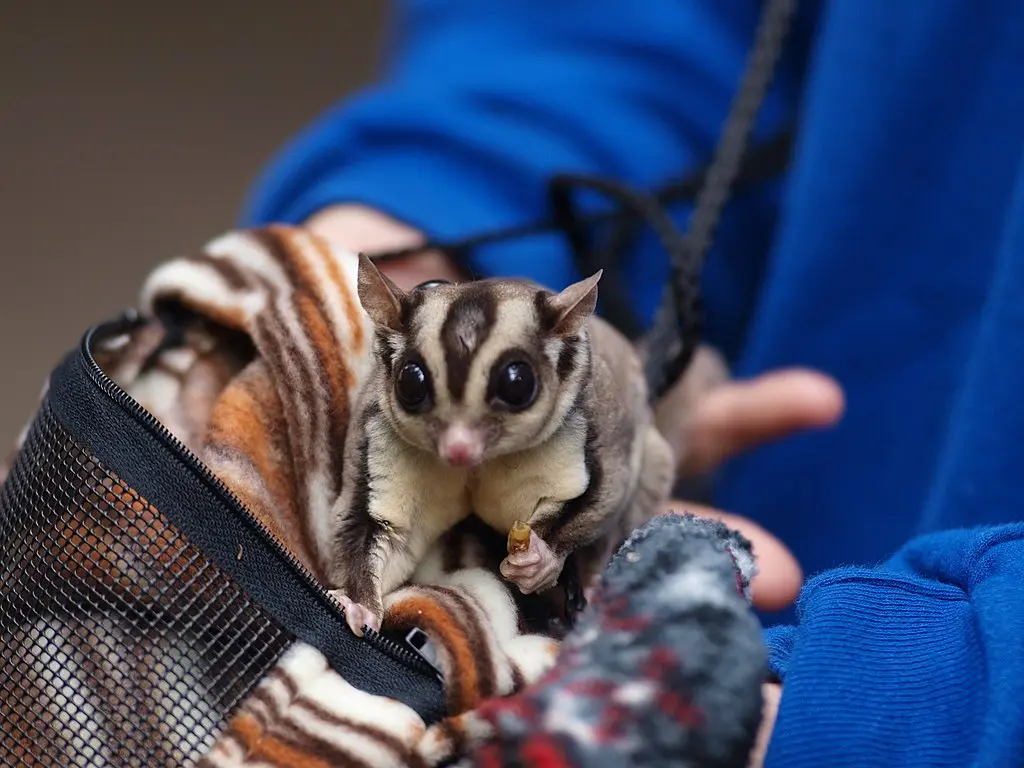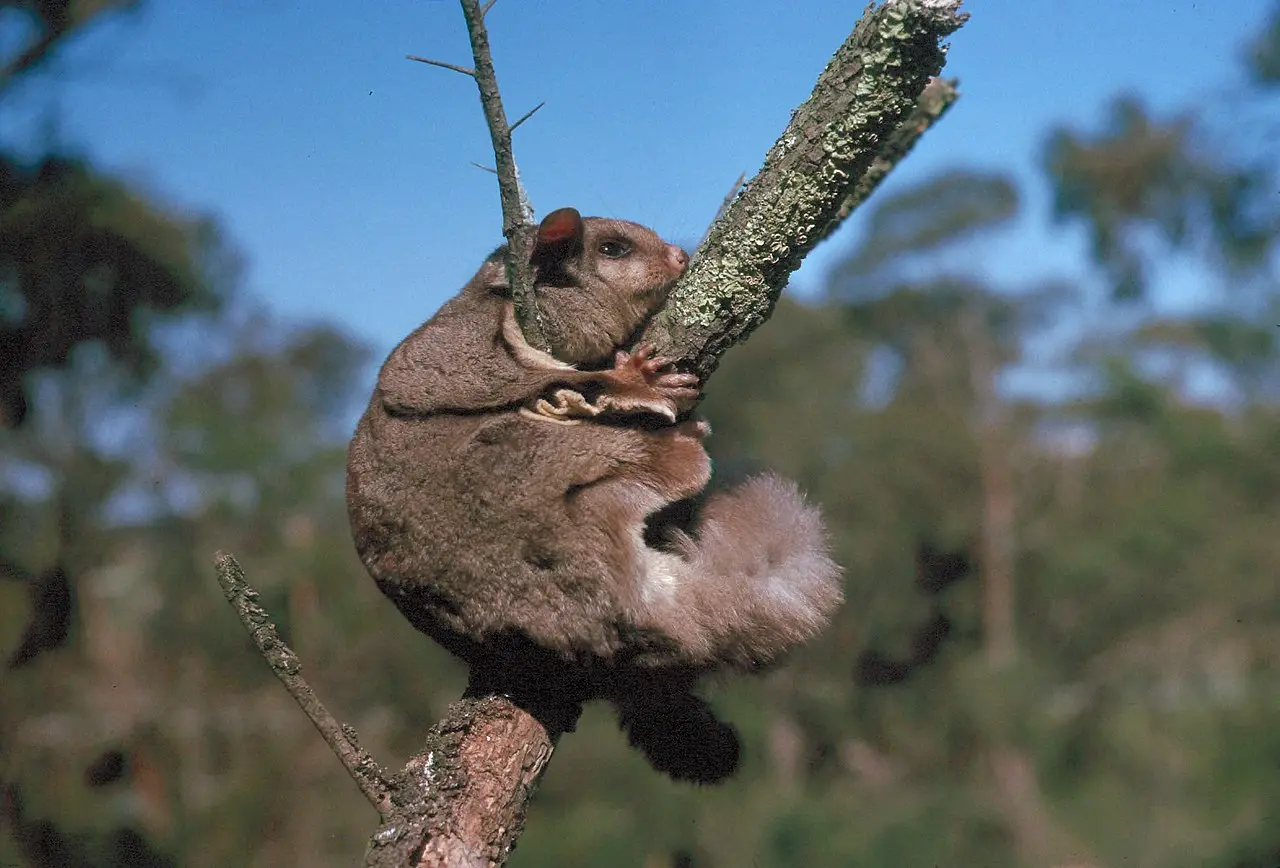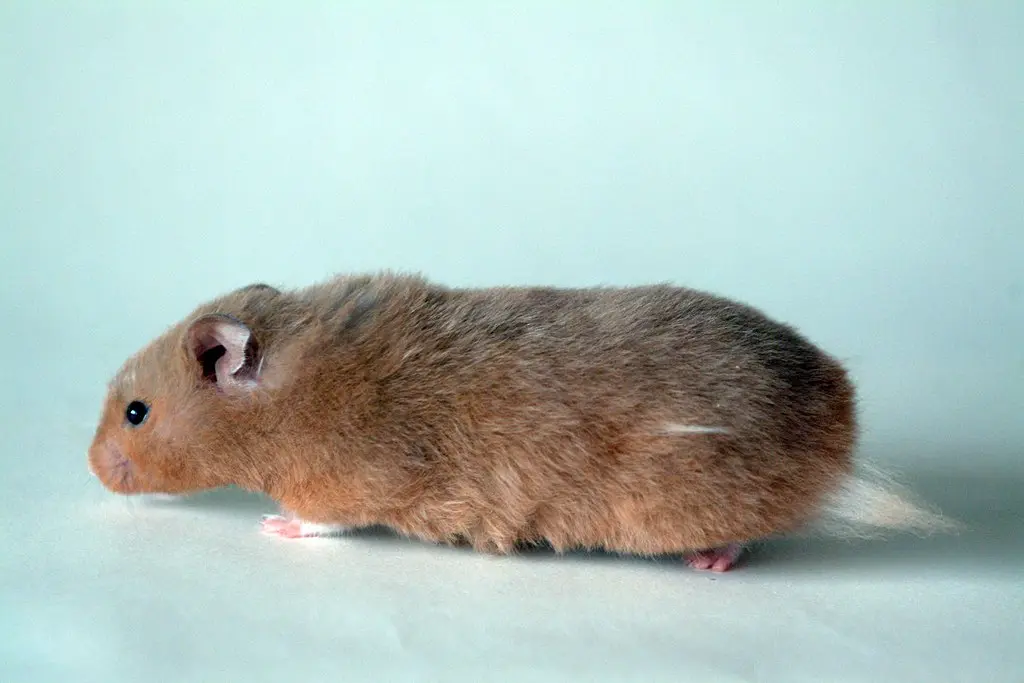When it comes to choosing a small furry pet, sugar gliders and hamsters often top the list. Both animals have their unique charm and can bring joy to their owners. However, if you’re considering getting both a sugar glider and a hamster, you’ve got to understand their compatibility and whether they can live together harmoniously. In today’s post, we’ll explore the characteristics of both pets, their care requirements, and how well (if at all), they can get along.
Sugar Gliders: Characteristics and Care

Sugar gliders are small marsupials native to Australia, Indonesia, and Papua New Guinea. They get their name from their love for sweet nectar and their ability to glide between trees using the skin flaps along their sides. These nocturnal creatures are known for their sociable nature, and they thrive when they have companionship.
Social and Environmental Needs
Sugar gliders are highly social animals that require companionship to thrive. In the wild, they live in large family groups, so it’s best to have at least two sugar gliders in captivity. They need a spacious enclosure with branches, toys, and hiding spots to keep them entertained and stimulated. Understanding their social and environmental needs is crucial for ensuring their happiness and wellbeing in captivity.
Companionship
In the wild, sugar gliders live in large family groups called colonies, which can consist of up to 30 individuals. These colonies provide them with a strong social structure and support system. In captivity, sugar gliders need at least one companion to prevent loneliness, depression, and other behavioral issues. Ideally, a pair or a small group of sugar gliders should be housed together to promote bonding and social interaction.
Enclosure Size and Setup
Sugar gliders require a spacious enclosure to accommodate their active nature and gliding abilities. A suitable enclosure should be tall and wide, with a minimum size of 24 x 24 x 36 inches (61 x 61 x 91 cm) for a pair of sugar gliders. However, larger enclosures are always better, as they provide more space for exploration, exercise, and play.
The enclosure should be furnished with branches, ropes, and perches at varying heights to encourage climbing and gliding. Providing multiple hiding spots, such as nesting boxes or pouches, allows sugar gliders to feel secure and comfortable.
Temperature and Humidity
Sugar gliders are sensitive to temperature and humidity fluctuations. The ideal temperature range for their enclosures is between 70°F and 90°F (21°C and 32°C). Avoid placing the enclosure near drafts, air conditioners, or heating vents to prevent sudden temperature changes. Maintaining a humidity level of 40-60% is recommended to ensure their comfort and prevent dehydration.
Noise and Light
As nocturnal animals, sugar gliders are sensitive to excessive noise and bright lights during the day. Place their enclosure in a quiet area of your home, away from loud noises and direct sunlight. A dimly lit environment during the day will help maintain their natural sleep patterns, while a low-level night light can provide enough illumination for them to be active during the night.
Handling and Interaction
Regular interaction with your sugar gliders is essential for building trust and forming a bond. If you’ve just recently adopted a sugar glider, you will need to be patient and take it slowly; approach them gently and patiently, as they can be shy and cautious around humans. This allows them to become familiar with your scent and voice, and then you can gradually progress to offering treats and gentle handling. Always be mindful of their body language and respect their boundaries to ensure a positive relationship.
Diet and Exercise Requirements

A sugar glider’s diet should consist of a balance of commercial sugar glider pellets, fruits, vegetables, proteins, and nectar. They should also be provided enough room for physical activity, to ensure their wellbeing and health in captivity.
Diet
A balanced diet for sugar gliders should consist of the following components:
- Protein: Sugar gliders need a source of protein, such as insects (e.g., mealworms, crickets), lean meats (e.g., cooked chicken, turkey), or boiled eggs. Insects can be offered daily, while other protein sources can be given a few times a week.
- Fruits and Vegetables: A variety of fresh fruits and vegetables should be provided daily, making up around 50% of their diet. Some suitable options include apples, pears, berries, melons, carrots, sweet potatoes, and leafy greens. Always wash fruits and vegetables thoroughly before feeding and remove any seeds or pits.
- Nectar: Sugar gliders have a natural affinity for nectar and sweet foods. Commercial sugar glider nectar or homemade nectar (made from water, honey, and a protein source like baby cereal) should be offered daily to meet their nutritional needs.
- Supplements: A calcium supplement is essential for sugar gliders to prevent calcium deficiency. Calcium supplements can be provided in the form of a powder, which can be dusted onto their food. Exotic Nutrition has a really good calcium solution you can try.
- Commercial Sugar Glider Diet: Some pet owners opt to feed their sugar gliders a commercially available sugar glider diet, which is a convenient way to ensure they receive balanced nutrition. You must supplement this with fresh fruits, vegetables, and insects to provide variety.
Exercise
Sugar gliders are highly active creatures that require daily exercise and play. The following activities will keep them stimulated and happy:
- Climbing and Gliding: Sugar gliders love to climb and glide, so their enclosure (cage) should come with branches, ropes, and perches at varying heights. This encourages them to use their natural abilities and keeps them active.
- Toys: A variety of toys should be provided to keep sugar gliders entertained and engaged. Foraging toys, chew toys, and puzzle toys can help stimulate their minds and encourage physical activity.
- Bonding and Interaction: Regular interaction with your sugar gliders, such as gentle handling and playtime, can help strengthen your bond and provide them with mental stimulation.
- Exercise Wheel: Some sugar gliders enjoy using exercise wheels, which can be a great way to provide additional exercise opportunities. If you choose to provide a wheel, ensure it has a solid surface to prevent injury.
Hamsters: Characteristics and Care

Hamsters are small rodents that come in various species, with the Syrian Hamster and Dwarf Hamsters being the most common. These adorable creatures are nocturnal and known for their cheek pouches, which they use to store food.
Social and Environmental Needs
Unlike sugar gliders, hamsters are solitary animals, and they can become territorial if housed together, leading to fights and injuries. Each hamster should have its own enclosure with hiding spots, toys, and an exercise wheel to keep them entertained and happy.
Syrian hamsters, for example, are highly territorial and must be housed alone to prevent aggression and injury. Dwarf hamsters, on the other hand, can sometimes be housed together if introduced at a young age, but they still require close monitoring to ensure compatibility and prevent conflicts.
Enclosure Setup
A suitable hamster enclosure should be spacious, well-ventilated, and escape-proof. For Syrian hamsters, a minimum cage size of 24 x 12 x 12 inches (61 x 30 x 30 cm) is recommended, while dwarf hamsters require at least 20 x 10 x 12 inches (51 x 25 x 30 cm). If you can get larger enclosures, they are always better, as they provide more space for exploration, exercise, and play.
The enclosure should be furnished with a layer of soft, absorbent bedding for burrowing and nesting. Provide hiding spots, such as small houses or tunnels, to help hamsters feel secure and comfortable.
Temperature and Humidity
Hamsters are sensitive to extreme temperatures, and their enclosures should be kept within a comfortable range of 65°F to 75°F (18°C to 24°C). Avoid placing them near drafts, air conditioners, or heating vents to prevent sudden temperature changes. Maintaining a stable humidity level of 40-60% is recommended to ensure their comfort and prevent dehydration.
Noise and Light
Hamsters are crepuscular animals. That means they like to party at dawn and dusk. But hey, don’t be surprised if they also pull an all-nighter like a total night owl. So, when setting up their crib, make sure it’s in a peaceful corner of your house, far away from rowdy noises and blinding sunlight. A dimly lit environment during the day will help maintain their natural sleep patterns, while a low-level night light will provide enough illumination for them to be active during the night.
Diet and Exercise Requirements

Hamsters require a balanced diet of commercial hamster pellets, fresh fruits, vegetables, and occasional treats like nuts and seeds. They also need plenty of exercise, which can be provided through an exercise wheel, tunnels, and toys.
Diet
Hamsters have specific dietary requirements that must be met to maintain their health. A balanced diet for hamsters should consist of the following:
- Commercial Hamster Food: A high-quality commercial hamster food should make up the majority of your hamster’s diet. These foods are formulated to provide a balanced mix of nutrients, including proteins, fats, and carbohydrates. Look for brands that contains a mix of pellets, seeds, and grains for the best variety.
- Fruits and Vegetables: In addition to commercial food, hamsters can be offered small amounts of fresh fruits and vegetables to provide extra nutrients and variety. Some suitable options include apples, pears, carrots, cucumbers, and leafy greens. Always wash fruits and vegetables thoroughly before feeding and remove any seeds or pits. Moderation is key, as too much of fruits or vegetables can cause digestive issues for them.
- Protein: Hamsters can benefit from the occasional protein source, such as mealworms, crickets, cooked chicken, or boiled eggs. Feed these foods sparingly to your hamster, as too much protein are not good for them.
- Treats: Treats can also be given occasionally to provide variety and enrichment. Suitable options include small pieces of unsweetened cereal, plain popcorn, or a small piece of plain, unsalted nut.
Exercise
Hamsters are active creatures that require exercise to keep fit and healthy. You can provide them with the following activities to maintain this active nature:
- Exercise Wheel: Probably the most popular of hamster accessories, also known as “the hamster wheel”. An exercise wheel is essential for your hamster’s physical activity and wellbeing. Ensure the wheel has a solid surface to prevent injury, and choose a size appropriate for your hamster’s species.
- Toys: Chew toys, tunnels, and climbing structures are great options that can help stimulate their minds and encourage physical activity.
- Playtime and Interaction: Regular interaction with your hamster will help strengthen your bond and provide them with mental stimulation. A playpen or a secure, hamster-proofed area can be used as a safe space for exploration and exercise.
- Burrowing and Nesting: Hamsters have a natural instinct to burrow and create nests. Providing a deep layer of soft, absorbent bedding in their enclosure allows them to engage in this natural behavior and promotes physical activity.
Comparing Sugar Gliders and Hamsters: The Key Differences
1. Differences in Social Behaviors
Sugar gliders and hamsters have different social behaviors due to their natural habitats, evolutionary history, and social structures. Here are some key differences in their social behaviors:
- Social Structure: Sugar gliders are highly social animals and live in groups called colonies or communities in the wild. They have complex social hierarchies with dominant and subordinate individuals. In contrast, hamsters are solitary animals and prefer to live alone in their burrows.
- Bonding and Pairing: Sugar gliders form strong bonds with their colony members, especially with their mate. They engage in grooming, scent marking, and vocalizations to maintain social bonds. Hamsters, on the other hand, are generally not social animals and do not form strong social bonds. They prefer to be solitary and may show aggression if forced to share their territory.
- Play and Interaction: Sugar gliders are known for their playful nature. They engage in social play, chasing each other, climbing, and jumping from tree to tree. They also exhibit social grooming and spend a significant amount of time interacting with other colony members. Hamsters are more independent and do not engage in extensive social play or interaction. They prefer to explore their environment individually.
- Communication: Sugar gliders have a wide range of vocalizations, including barking, chirping, and hissing, which they use for communication within their group. They also communicate through scent marking and visual displays. Hamsters, however, communicate mainly through scent marking and limited vocalizations like squeaking or hissing when they feel threatened.
- Reproduction: Sugar gliders have monogamous mating systems, where a male and female form a pair bond and raise their offspring together. They exhibit cooperative breeding, with both parents actively involved in caring for the young. In a stark difference compared to sugar gliders, hamsters are solitary breeders, and once mating occurs, the male does not contribute to the care of the young. Female hamsters raise the offspring on their own.
2. Differences in Care Requirements
There are several key differences in care requirements between sugar gliders and hamsters as follows:
- Diet: Sugar gliders require a more complex diet consisting of fruits, vegetables, proteins, nectar, and commercially available sugar glider pellets. In contrast, hamsters primarily eat commercial hamster pellets and may supplement it with the occasional fresh fruit, vegetables, and treats like nuts and seeds.
- Living Space: Sugar gliders need a larger and more spacious enclosure with branches, toys, and hiding spots to simulate their natural environment. Hamsters, on the other hand, can live in smaller enclosures but still require hiding spots, toys, and an exercise wheel for entertainment and exercise.
- Companionship: Sugar gliders are social animals that need companionship to thrive, so it’s best to have at least two sugar gliders in captivity. In contrast, hamsters are solitary animals that can become territorial if housed together, making it necessary to house them individually.
- Exercise: Both sugar gliders and hamsters require exercise, but their needs differ. Sugar gliders need enough space for climbing and gliding, such as branches and toys in their enclosure. Hamsters on the other hand, benefit from exercise wheels and tunnels to stay active and healthy.
3. Differences in Lifespan and Activity Levels
There are notable differences in the lifespan and activity levels of sugar gliders and hamsters. They are as follows:
- Lifespan: Sugar gliders generally have a longer lifespan compared to hamsters. Sugar gliders can live for 10-15 years, while hamsters have a shorter lifespan of 2-3 years on average. This difference in lifespan is an important consideration for potential pet owners when choosing between these two species.
- Activity Levels: Both sugar gliders and hamsters are nocturnal animals, meaning they are most active during the night and sleep during the day. However, their activity patterns may differ slightly. Sugar gliders are known for their gliding abilities and tend to be more active climbers, while hamsters are more likely to burrow and run on their exercise wheels. Pet owners should take these differences in activity levels into account when providing an appropriate environment and enrichment for each species.
The Verdict: Can Sugar Gliders and Hamsters Get Along?
In light of the significant differences in social behaviors, care requirements, and activity levels, it is not advisable for sugar gliders and hamsters to live together. Their contrasting social natures especially – sugar gliders being highly social and friendly and hamsters being solitary and territorial, makes it challenging for them to coexist peacefully. Making them live together poses risks such as stress, aggression, and potential injury to both animal. For example:
- Sugar gliders may perceive hamsters as prey due to their size and natural hunting instincts.
- Hamsters can become stressed and territorial in the presence of other animals, potentially leading to aggressive behavior.
Tips for Keeping Both Sugar Gliders and Hamsters as Pets
If you still insist on keeping both sugar gliders and hamsters as pets, there are some steps you can take to ensure their wellbeing:
- Provide Separate Living Spaces: Since sugar gliders and hamsters have different care requirements, they should have separate enclosures. This prevents territorial disputes.
- Create Species-Specific Environments: Ensure that each enclosure is tailored to the specific needs of the animal. For sugar gliders, a spacious enclosure with branches and hiding spots works great. For hamsters, a comfortable space with hiding spots and an exercise wheel works just as well.
- Monitor Interactions: If you choose to introduce the pets to each other, do so gradually and under close supervision. Keep an eye on their interactions to ensure that there is no aggression or stress. Be prepared to separate them if any issues arise.
- Maintain Proper Diets: Sugar gliders and hamsters have different diet requirements. Sugar gliders need a balance of fruits, vegetables, proteins, and nectar, while hamsters require commercial hamster pellets, fresh fruits, vegetables, and occasional treats. This can be difficult to keep track of, as you have to cater to very specific diets of both animals — so we recommend getting an animal meal planner and tracker to help you monitor everything.
- Establish Separate Play Areas: Create separate play areas for each species to prevent territorial disputes and ensure that both animals have a space to exercise and explore safely.
- Regular Health Check-ups: Schedule regular health check-ups with a veterinarian experienced in treating both sugar gliders and hamsters. This helps ensure that both pets remain healthy and that any potential health issues are addressed promptly.
By following these tips and taking the unique needs of each species into account, you can ensure a happy and healthy environment for your sugar gliders and hamsters, even if you insist on keeping them both as pets.
